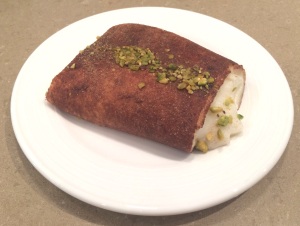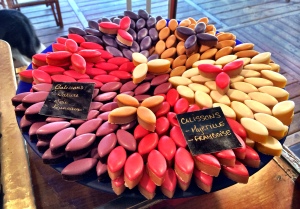The 4 food groups of Christmas
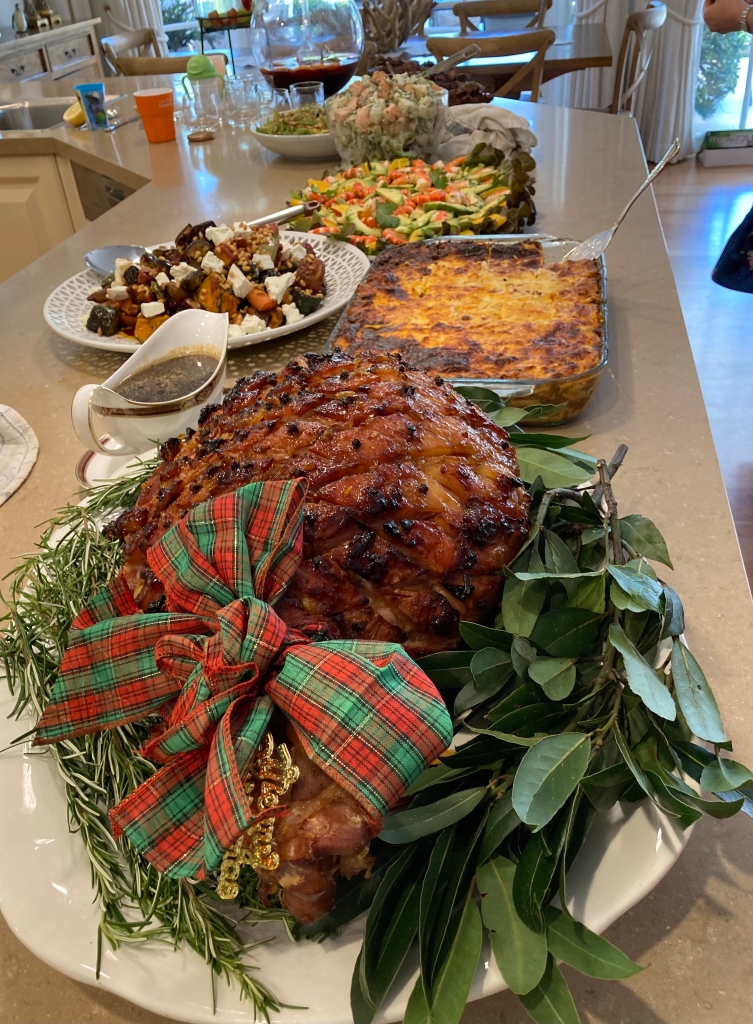
I am nostalgic at the best of times but at Christmas I am in overdrive.
For example, I am emotionally attached to every decoration I’ve grown up with so when one disappears from my parents’ tree I am immediately concerned. Last week I noticed that a (technically edible) decoration I made in primary school (a real orange spiked with cloves and dried) was gone.
“It rotted last year. I tossed it” said mum matter-of-factly without a shred of regret.
“Whaaaaaaaaaaaaaaaaaaaaaaaaaat????????????” I wailed with my arms in the air (an appropriate reaction given the severity of the disaster and on par with mum’s reaction when she thought we’d lost her beloved Rod Stewart Christmas CD).
I was devastated. I made that decoration with my own two infant-sized hands, it was priceless! Rotting was no excuse for disposing of it, no matter how decomposed it was.

If I’m like that about decorations, imagine what I’m like about the food????
I am extremely attached to our Christmas eating traditions. We have developed a very specific style over the years, a mélange of Greek, English, Aussie traditions with a few other random European touches. It’s unique and reflective of the extraordinary cooking talent that exists in my clan. Spearheaded by my dear yiayias – Alexandra and Maria – and deftly continued by my mum, aunties and sisters.

In my typical nostalgic state over Christmas, I got to thinking about our foodie traditions and how special they are to me. So… what exactly is on our Christmas lunch* table?
(*I call it lunch but we’ve never eaten before 4pm.)
I’ve whittled down the magic into 4 key food groups. There are others of course – there’s always a healthy smattering of mezedes, salads, roast vegetables and carbs. But they ebb and flow with the seasons and the styles. Mum’s dining table wouldn’t have been caught dead without her signature potato casserole nestled beside her artichoke and avocado salad in the 90s. So chic. These days the salads are more artisan and the roast veg extend beyond the humble spud.
So here are the 4 key food groups of my family’s Christmas.
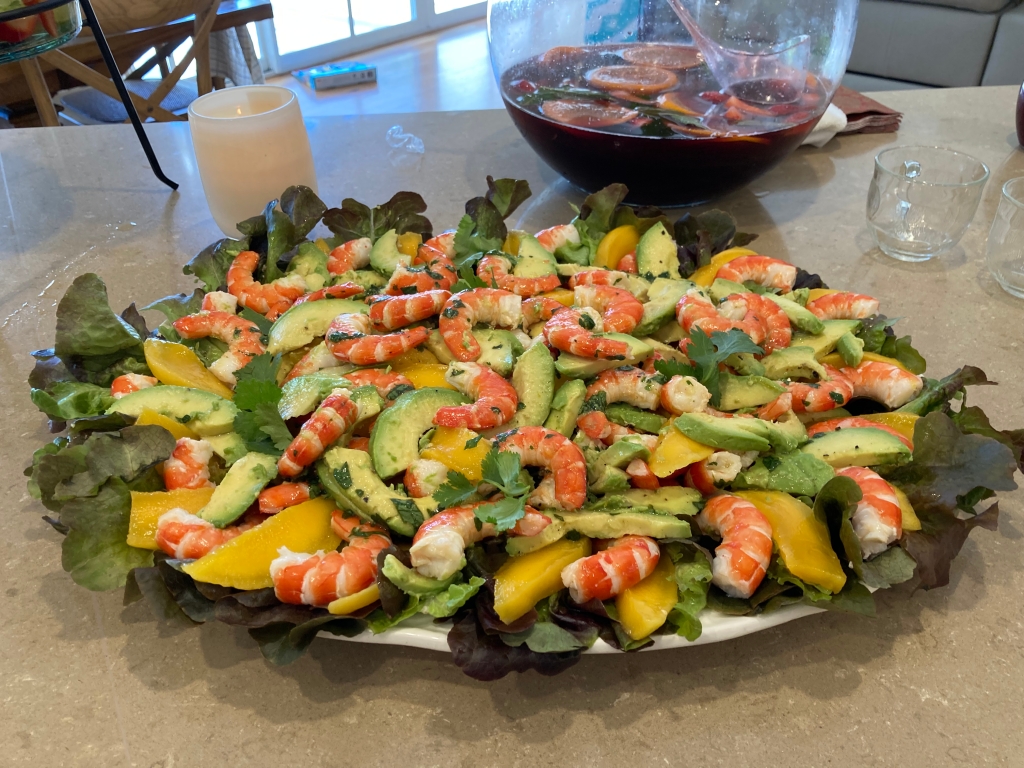
Prawns
Our family Christmas lunch always starts with prawns. I should know – I’m usually the poor sucker who has to peel and devein them. A facebook memory reminded me that 5 years ago I peeled 125. That was good context for this year as I peeled 65 and that felt like torture. I moan but it’s worth it – who wants to have to do all that work on their own plate? Apart from the effort, which is better channeled into pulling crackers, the prawn debris takes up valuable real estate for other delicious things. I happily take one for the team most years. And they are delicious whatever way you cut it – naked with lemon or in a salad with avocado and mango like this year.

Lasagne
Okay I know what you’re thinking. Lasagne is Italian. You’re Greek.
True.
(Although we are technically Italian too as my island was a hotbed for Venetians who used to sail past and get frisky with the girls. You only need to go about four generations back to see how our family name was Venetian. DNA tests show the same thing.)
But back to the food.
There are Greek variations of lasagne. Pastitsio – which uses penne instead of thin pasta sheets. There’s also the powerhouse of moussaka which switches pasta for eggplant and potato.
Why don’t we stay in our lanes here? Good question.
Yiayia Maria started it. Mum tells me that she remembers yiayia making pastitsio when she was young but at some point yiayia switched to lasagne and never looked back. Christmas isn’t Christmas without yiayia’s lasagne. It’s unbelievably delicious. She once showed me how to make it and technically there’s nothing flash about it and no secret ingredients but mine doesn’t even come close. Mum’s does though. The baton has been passed.

Big meat
For many years I thought everyone had a giant turkey, ginormous leg of ham and huge pork roast for Christmas lunch.
Nope. Just my family.
The turkey and ham are pretty self-explanatory, they are long-standing English and European traditions that have been appropriated by much of the world. The addition of pork is a nod to our heritage and the main ingredient of a traditional Greek Christmas feast because pigs were typically slaughtered in the weeks leading up to Christmas day.
The roast pork has faded out over the last few years. And we have all come around to the cold hard fact that a roast turkey is stressful, time consuming and never as tasty as the dream (making another one of yiayia’s lasagnes would have a better return on investment).
So instead we’ve gravitated to turkey rolls and even a turducken for kicks.
Does that mean less meat overall on the table? Hardly. We still had 60 souvlakia on the table this year, you know, in case anyone was still hungry.
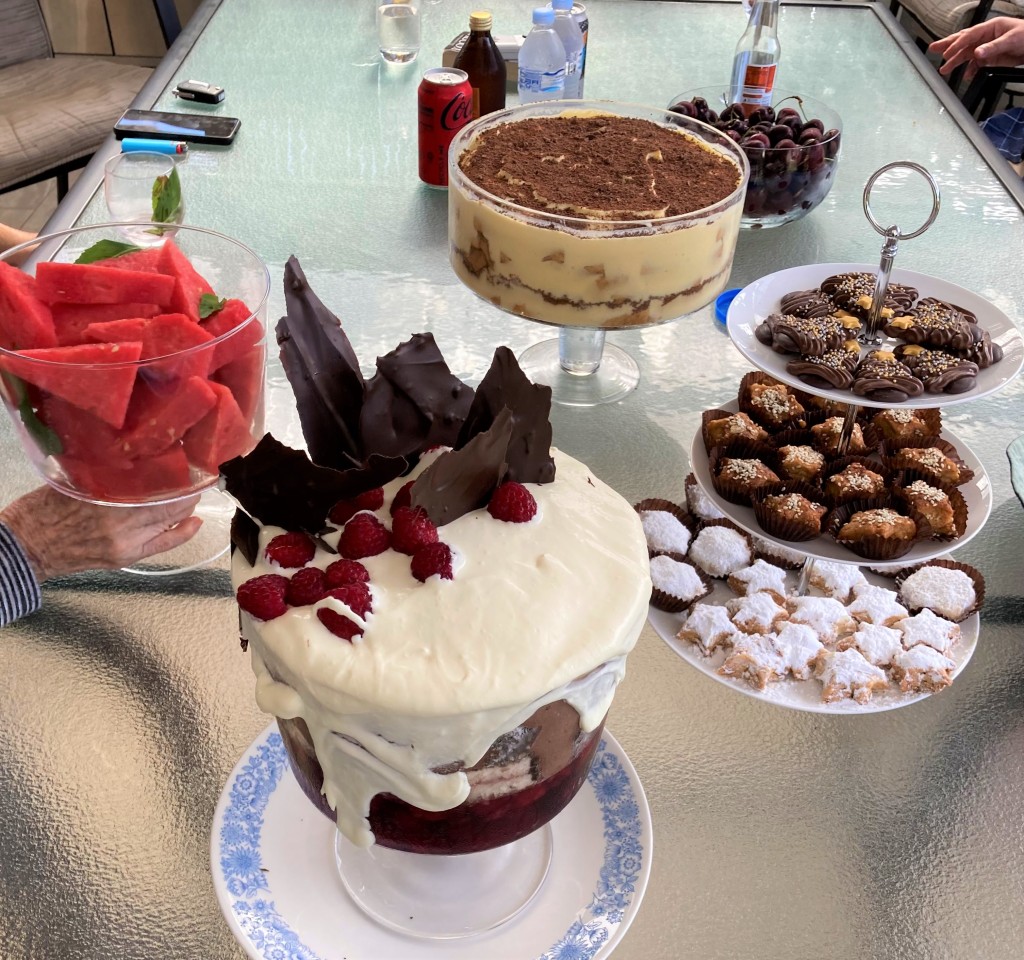
Sweets
This is where our Christmas really shines. The meat, salads, carbs, etc are just a warm up for the main event – the sweet table! No matter how full you are, space can always be found for sweets.
I’ve never seen a Greek sweet table with less than a dozen (big) dishes on it. I remember once my mum was entertaining and accidentally forgot to serve a huge cake that was waiting patiently in a cupboard. No one even noticed its absence because there were at least 10 other mammoth desserts on offer.
This is where we weave back in Greek traditions.

Starting with kourabiethes – those delicious toasted almond spiked crescent-shaped shortbreads that are groaning under the weight of icing sugar. Never sneeze while holding one or you’ll turn into a snowman. Apart from the toasted almonds, the other differentiating feature is the addition of ouzo.
There’s also melomakarona, a traditional orange and cinnamon scented biscuit doused in honey and crushed walnuts. And rozethes, a typical honey almost biscuit from my island of Kythera.

This is on top of an array of other sweet treats – tiramisu, trifle, mousse cake, white Christmas, fruit cake, pavlova and mum’s signature ice-cream cake made with glace fruit and Vienna almonds.
An obligatory fruit platter rounds out the offering and our bellies.
And because we’ve catered for a small army there are leftovers for days.
It really is the most wonderful time of the year.




